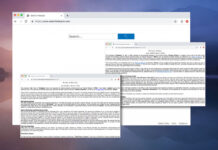
SOCs today face vastly different challenges than they did ten years ago. An overabundance of security threats has led to an overabundance of security tools, which has, in turn, led to an overabundance of alerts. If we’re not careful, the sprawl could continue. The only thing there isn’t too much of is cybersecurity experts, making for a tough situation.
There are ways to improve this. Finding tools that integrate well – that play nice with one another – can create a lean system where the path from detection to remediation is unblocked. The right alert management system can then make all the difference by triaging, investigating, and responding to the alerts that matter most.
The main problem in cybersecurity today is that it is too complex, and there needs to be clarity. This makes more work for everyone and too much for many teams. Integrating disparate security solutions and having a well-tuned alert management program is key for achieving the kind of straightforward security structure that lets humans succeed against mounting digital challenges.
Here are a few best practices for improving security tool integration and alert management to simplify security and take operational stress off your security teams.
4 Steps to Security Tool Integration
The more security solutions in your stack, the more tools your team will have to manage. At some point, it’s too much. A survey by Osterman Research on behalf of Trustwave revealed that 30% of enterprises admitted to underutilizing their current technologies, with one company reporting that 60% of its investments were shelfware. Often, the price to pay for keeping up with too many things is a high one; a Mimecast study indicated that stress and burnout are causing one-third of SOCs surveyed to consider leaving their role in the next two years.
- Understand the Threats You Face | AI has made threats like ransomware all but ubiquitous. With Hacking-as-a-Service campaigns, polymorphic malware, and the usual lineup of web-based attacks, an enterprise has a lot to worry about. Perform vulnerability scans, pen test your defenses, and even do some red teaming if you must, but identify your main threats along with areas of greatest weakness.
- Know the Capabilities You Need | Now that you know the threats you face and where they are most likely to find their way in, identify the tools and skills you will need to mount the most sensible defense. Which solutions give you the telemetry you need? Which capabilities are most integral to defending your weak points against the most imminent threats?
- Get Rid of Shelfware | Once you know which technologies will make the biggest difference to your organization, cut your losses by getting rid of investments that overlap in their scope or do not serve your security priorities. The fewer solutions, the more chance your team has of using them to their fullest.
- Fill in the Gaps | Now, identify any areas in which you have a security need but not a security tool. Believe it or not, you may still have gaps unfilled even with all the excess shelfware you were carrying around. Once you’ve identified those gaps, look for solutions that will play well with the ones you already have.
One thing to keep in mind: when you’re thinning out your security resources, be strategic by prioritizing the ones closest to the “initial access point” of the attack. That way, when they generate alerts, they will be the ones that matter the most and give you the most time to catch the exploit as possible.
Achieving More with Alert Management
While telemetry is good, too much – without the right analysis – is not. As noted by data analytics company Prophet, “While more telemetry brings about the potential for higher fidelity and more responsive security outcomes, it also significantly increases the alert volume for your operational teams – often without a tangible benefit.” Which brings us to our next point. Here are tips for managing your security alerts, not having them manage you.
- Look to Artificial Intelligence | Lean on an AI tool that can help sort out telemetry and vet your alerts (before your SOC has to). Find tools that can do a bit of legwork: triaging, investigating, and finding false positives.
- Double-up on Duties | Use your human team wisely. Those who detect threats can also triage them at the same time if they are properly cross-trained. This also incentivizes those on the left to create effective and well-tuned alert policies because if they don’t, they’ll be the ones on clean-up duty.
- Outsource As Needed | Ultimately, alerts shouldn’t be something that’s allowed to sink your ship. The few valuable cybersecurity personnel you’ve hired should be free to use their skills to investigate real threats, not combing through false alarms. If you need to hire out so that a team of others can help manage detections and vet alerts, it might be a wise use of your security resources.
- Automate, Automate, Automate | Build automated workflows into your scalable architectures that can take a lot of the alert-vetting busy work out of your hands: investigations, log checking, and even playbook responses to run down possible options.
Scalability and simplicity are going to be the watchwords of security in the coming years. We are at a point where the bubble is going to burst, and security complexity is being weaponized. As Martin Roesch, CEO of Netography, stated in Dark Reading, ” As environments grow noisier with context-free security alerts and a constant flood of log data, it becomes easier for attackers to intentionally create distractions that make it possible for them to conceal their activities inside the network.” The message is clear: simplify or die.
Organizations are going to need to change strategies to keep up with force-multiplied threats and more confusing architectures at the same time; inevitably, it will be the complex architecture and redundant processes that will need to go, as cybercriminals aren’t changing their act any time soon.




























